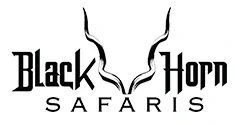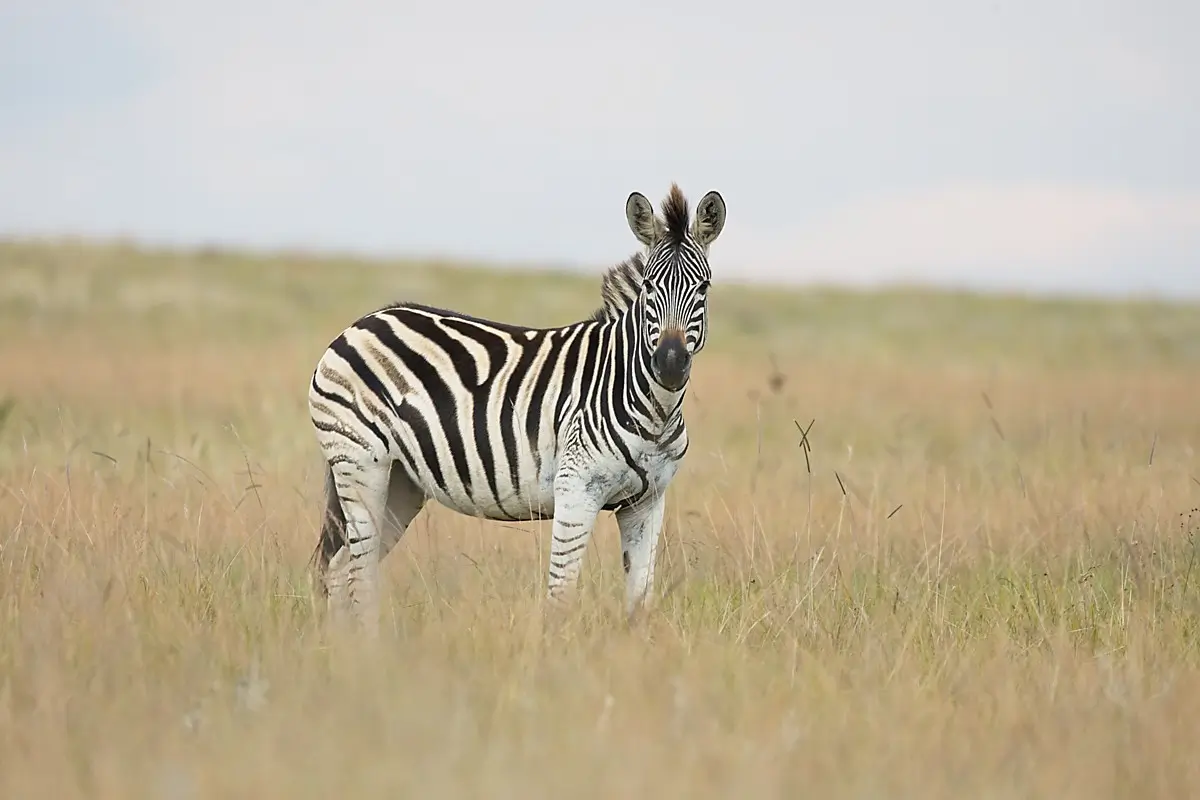
Hunting Zebra has been a traditional practice in Africa for centuries, with indigenous people relying on these animals for sustenance and cultural significance. While modern hunting often focuses on the pursuit of the zebra for its unique, striped skin it remains an important aspect of the African Safari experience. Zebras inhabit various ecosystems, from the grass plains of the highveld to the semi-arid regions of Africa. If you are planning a hunt in South Africa this article will provide the information you need including prices, hunting packages, best areas, bow hunting and rifle calibers.
Description and Characteristics
Burchell’s zebra, also known as the plains zebra (Equus quagga burchellii), predominantly found across the grasslands and bushveld of eastern and southern Africa. Distinguished by its unique black-and-white striped pattern, Burchell’s zebra stands out as one of the most recognizable and visually striking creatures in the African bush. The stripes are not only beautiful but also serve as an effective camouflage, confusing predators and helping the zebra blend into the landscape. Burchell’s zebra typically measures around 1.4 meters (4.6 feet) in height at the shoulder and weighs between 200 to 450 kilograms (440 to 990 pounds). This subspecies is characterized by broader stripes that extend around the belly, with shadow stripes often appearing between the main ones. Burchell’s zebra is a social animal, forming close-knit family groups called harems, led by a dominant male or stallion. These highly adaptable creatures are capable of thriving in various habitats, ranging from open plains to bushveld areas, and play a crucial role in maintaining the ecological balance of their environment.
Description and Characteristics of Cape Mountain Zebra
The Cape mountain zebra (Equus zebra zebra) is a distinct subspecies of the mountain zebra, predominantly found in the mountainous regions of South Africa’s Western and Eastern Cape provinces. Smaller in size compared to Burchell’s zebra, Cape mountain zebra measures around 1.2 meters (3.9 feet) in height at the shoulder and weighs between 230 to 260 kilograms (507 to 573 pounds). This subspecies is distinguished by its bold black-and-white stripes, which are narrower and more closely spaced than those of its plains zebra counterpart. The stripes on a Cape mountain zebra do not extend around the belly, leaving it predominantly white. Adapted to a rugged terrain, this zebra possesses strong, well-developed hooves and a sturdy build, enabling it to navigate steep slopes and rocky outcrops. Due to concerted conservation efforts, this once-endangered species has made a remarkable recovery, though it remains an essential focus of habitat protection and sustainable wildlife management.
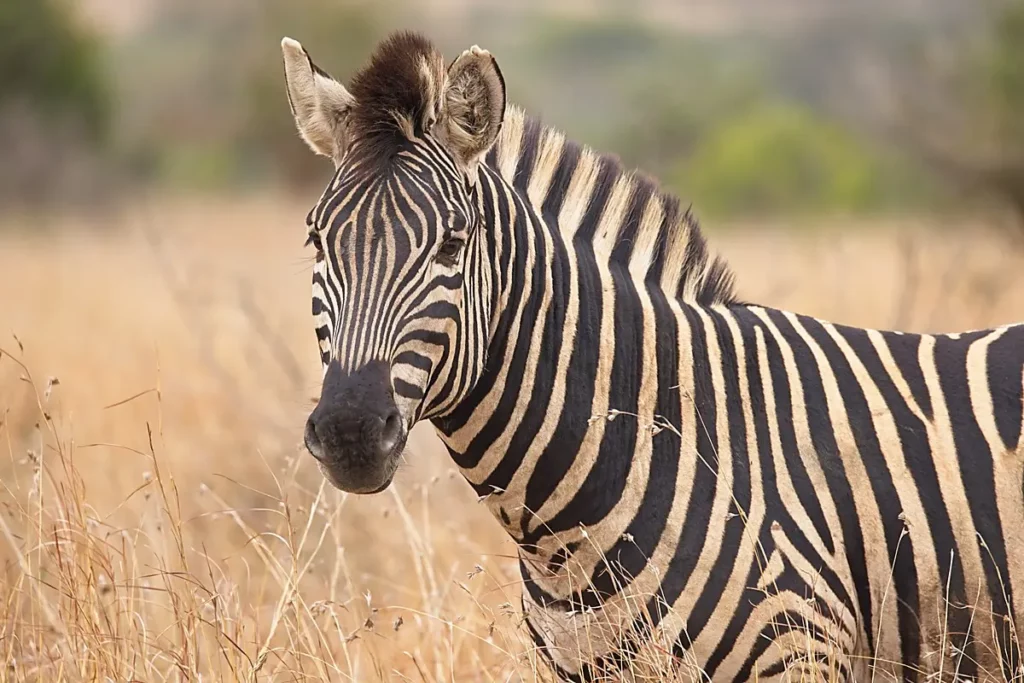
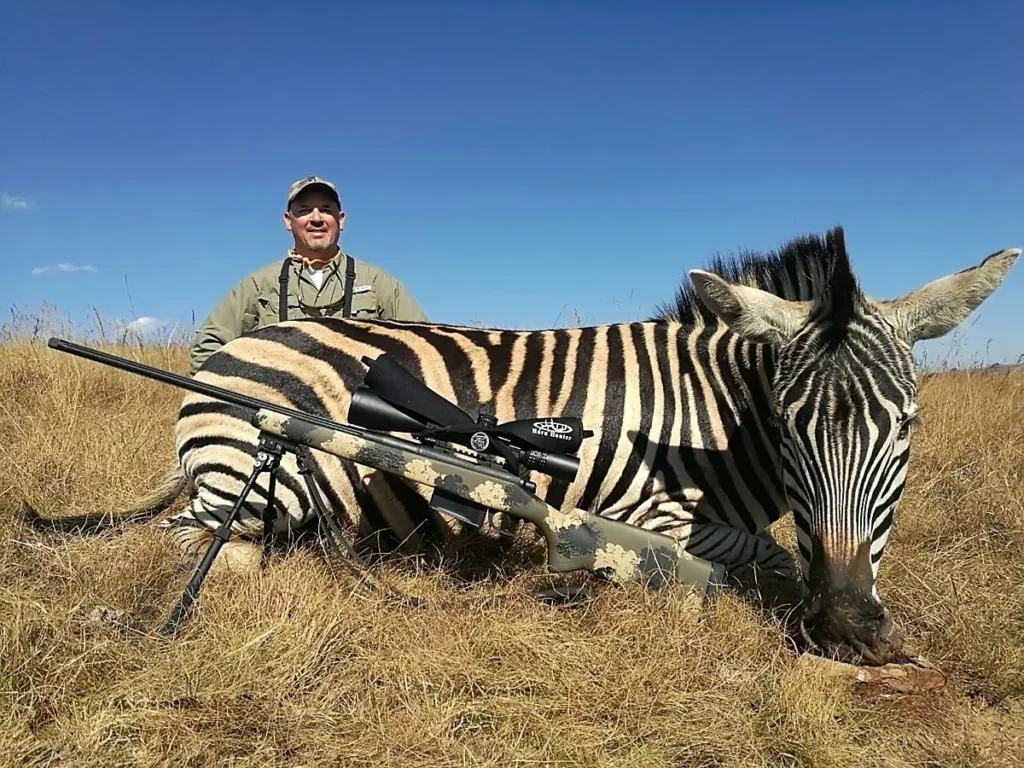
Zebra Trophy
A zebra trophy is prized by hunters and collectors, showcasing the unique beauty of the zebra’s striped hide. In contrast to horned animals, Zebras are not evaluated as trophies based on traditional horn measurements. Rather, a Zebras trophy quality is determined by the beauty of it’s skin. The distinct black-and-white pattern serves as a visually striking piece of art in trophy rooms. One popular method of displaying a zebra trophy is through a rug mount, where the hide is expertly tanned and stretched to create an elegant floor covering that accentuates the natural pattern of the stripes. Another popular method is the pedestal mount, which presents the zebra’s head and neck mounted on a raised platform, capturing the elegance and grace of the animal. Both rug and pedestal mounts require skilled taxidermy craftsmanship to ensure that the zebra’s natural beauty is preserved, transforming the hide into a lasting testament to the beauty and mystique of this iconic African species.
Best Locations for Zebra Hunting
South Africa boasts a diverse landscape and rich wildlife, making it an ideal destination for safari enthusiasts. Among the best locations for pursuing Burchell’s zebra is the Eastern Cape, where vast expanses of grasslands and bush provide the perfect habitat for these stunning creatures. The Limpopo Province, bordering Zimbabwe and Botswana, offers hunting opportunities in its extensive bushveld, where zebras often roam in search of grazing. The Free State Province, with its open plains and rolling hills, is another excellent location to find zebras in their natural habitat. Numerous private game reserves and hunting concessions scattered across South Africa ensure access to prime zebra habitat. With a multitude of well-managed hunting areas, South Africa remains a top destination for those seeking the thrill and challenge of hunting Zebra.
Rifles and Calibers for Hunting Zebra
When after zebras, selecting the right rifle hunting caliber is an important part of safari planning. Due to their robust build and tenacity, a medium to heavy caliber rifle is generally recommended for zebra. Some popular choices among hunters include the .30-06 Springfield, .308 Winchester, .300 Winchester Magnum, and .9.3 X 62. These calibers offer a balance of power, accuracy, and manageable recoil. Premium-grade ammunition with controlled expansion bullets, such as Nosler Partition or Swift A-Frame, are preferred, as they ensure reliable penetration and energy transfer for a clean, one-shot kill. Bullet weights of 180 – 250 gr are ideal.
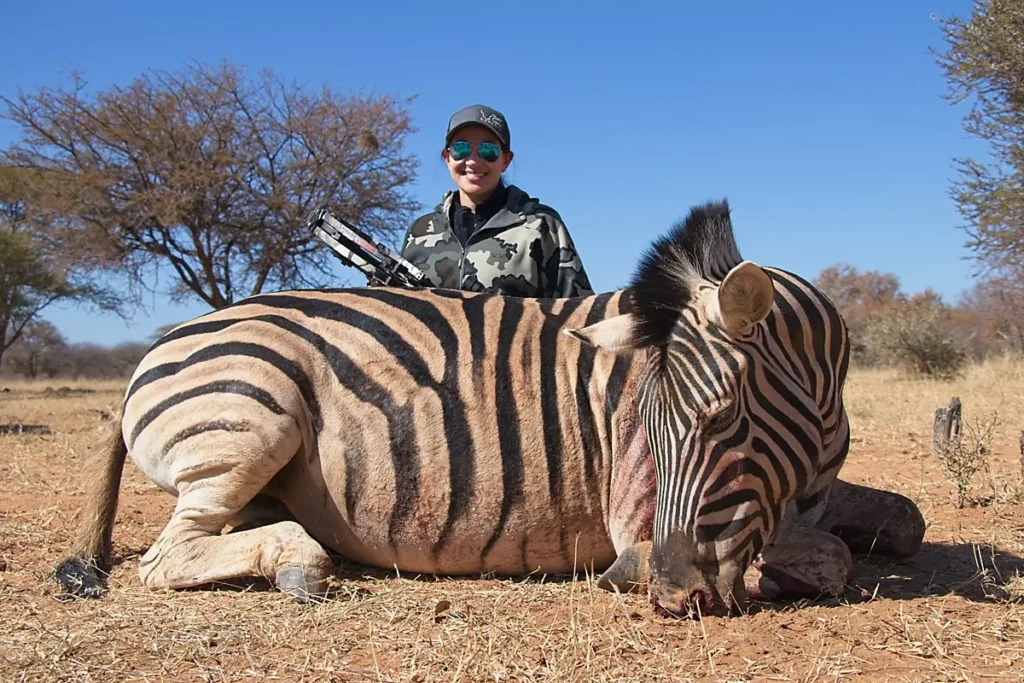
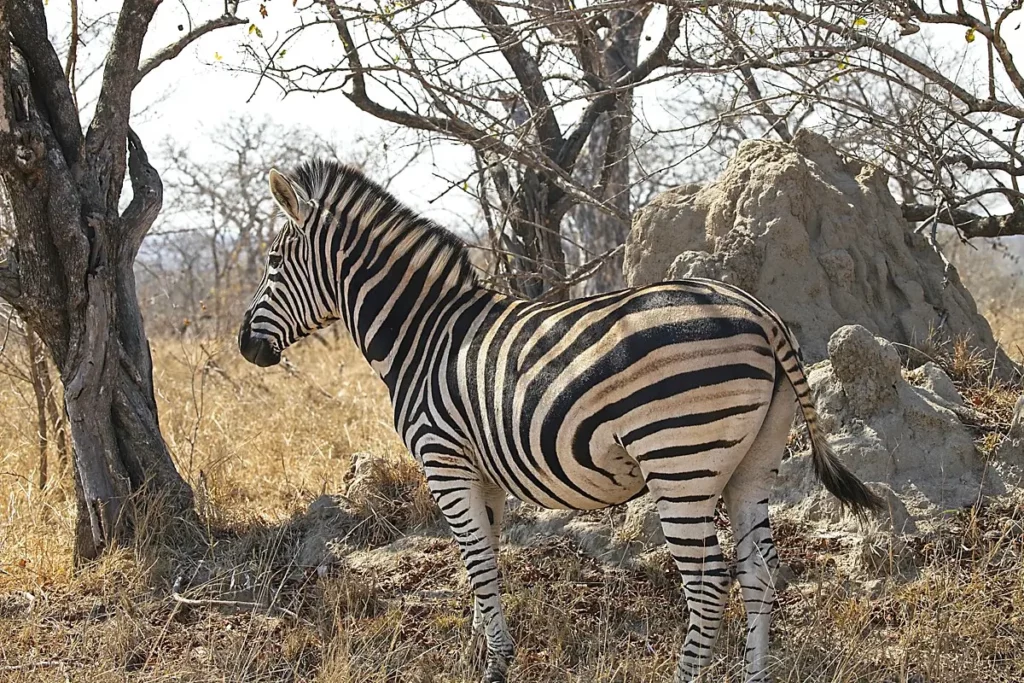
Rifle Scopes and Optics for a hunt in South Africa
Choosing the appropriate rifle scope for zebra is essential for accurate shot placement and a successful, ethical hunt. Considering that zebras are often found in wide-open spaces or semi-thick bushveld, a versatile scope that offers variable magnification is highly recommended. A scope with a 3-9x or 4-12x magnification range provides the flexibility needed to adapt to varying distances and terrain conditions, ensuring optimal accuracy and target acquisition. When selecting a rifle scope, hunters should prioritize features such as durability, reliability, and clarity with good light transmission. Brands like Leupold, Swarovski, and Vortex are well-regarded for their high-quality scopes designed for big game hunting. A rangefinder can be a valuable tool for determining precise distances to the target.
Best Shot Placement when Hunting
For an efficient harvest of zebra, proper shot placement is critical. Two of the most commonly recommended shots for zebra hunting are the broadside shot and the quartering away shot. The broadside shot presents the entire side of the zebra, offering the largest target area and the best chance of hitting the vital organs. In this position, aim for the heart and lung area, which can be found by drawing an imaginary line up the front shoulder, approximately one-third up the body from the chest. This shot placement ensures maximum damage to the vital organs, resulting in a quick, clean, kill. The quartering away shot is taken when the zebra is standing at an angle, facing away from the hunter. This position exposes the heart and lungs from the side and rear, providing an opportunity for a lethal shot. Aim slightly behind the shoulder, with the bullet trajectory angled forward to penetrate the vital organs. Both the broadside and quartering away shots require precision shooting, but when executed correctly, they offer the most ethical and efficient means of harvesting a zebra.
Bow Hunting Zebra
A bow hunt in South Africa for zebra offers a unique and challenging hunting experience. One popular method is the walk and stalk method, where hunters silently and cautiously follow a herd of Zebra. This method demands a keen understanding of zebra behavior, as well as exceptional stalking abilities, in order to close the distance for an effective bow shot. Alternatively, hunting from a ground blinds or tree stands provides an opportunity to wait for zebras to come within effective bow range. Ground blinds, typically placed near waterholes or well-used game trails, allow hunters to remain concealed and undetected, while tree stands offer an elevated vantage point for better visibility and a clear shooting lane. Both methods require a deep understanding of zebra movement patterns and strategic positioning to increase the chances of success. Bow hunting zebra, though more demanding than rifle hunting, provides an exhilarating and intimate connection to the wildlife and the hunting process itself.

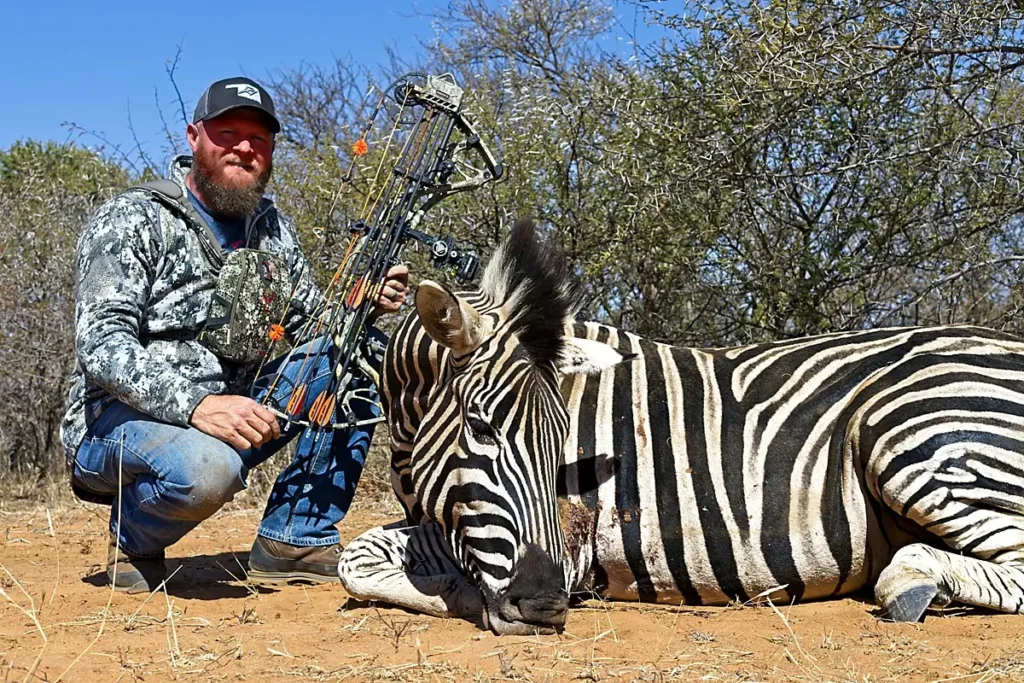
Bow Hunting Equipment
Selecting the appropriate bow hunting equipment is important for a successful zebra Safari. A good, modern compound or traditional recurve bow will get the job done. Bow manufacturers such as Mathews, Bowtech and Hoyt are renowned for producing high-performance bows suitable for big game hunting, offering a balance of power, accuracy, and smooth shooting characteristics. High-quality carbon fiber arrows offer the durability, accuracy, and penetration needed to take down a zebra effectively. Arrow weights ranging from 450 to 550 grains are recommended, as they provide sufficient kinetic energy to penetrate the rib cage and reach the vital organs. Both fixed and mechanical broad heads can be used, depending on personal preference and hunting conditions. Fixed blade broad heads, with their sturdy construction, offer reliability and penetration, while mechanical broad heads deliver wider cutting diameters, resulting in larger wound channels and increased chances of a quick kill.
An excellent choice for archery hunting Zebra is a modern crossbow. The newer crossbow designs offer excellent accuracy, speed and penetration.
By investing in the right bow hunting equipment, hunters can maximize their chances of a successful and rewarding zebra hunting experience.
Zebra Prices and costs of a Hunting Safari
The standalone price for a Zebra hunt is $ 1350.
Daily rates for a Zebra hunting Safari are:
- Hunting 2 on 1 (2 hunters sharing a Professional Hunter) @ $ 350 per hunter per day.
- Hunting 1 on 1 (the hunter has the services of the Professional Hunter to himself) @ $ 450 per hunter per day.
The daily rates include:
- Accommodation in a hunt lodge
- Meals
- Soft drinks
- The services of a Professional Hunter
- Field preparation of trophies
- Delivery of trophies to the Taxidermist
- Road transportation to and from Johannesburg International Airport
Zebra Packages and Hunts
Bronze plains game package
$6 300
Includes 7 days hunting and trophy fees for 4 plains game species – 1 X Blue Wildebeest, 1 Zebra, 1 X Impala and 1 X Warthog.
Price $ 6 300.00 (2 hunters sharing a Professional Hunter).
Zebra and Gemsbuck 5 species hunting package
$ 7 050
Includes 7 hunting days and trophy fees for 5 game species – 1 X Zebra, 1 X Gemsbuck, 1 X Blesbok, 1 X Impala and 1 X Warthog.
Price 7 050.00 (2 hunters sharing a Professional Hunter).
FAQ’S Frequently asked Questions on Plains Zebra in Africa
What determines Zebra trophies?
In contrast to horned animals, Zebras are not evaluated as trophies based on traditional measurements. The trophy typically consists of the zebra’s distinct striped skin, which is carefully preserved through expert tanning and mounting techniques. The hide can be transformed into various forms of display, such as rug mounts or pedestal mounts, showcasing the striking black-and-white pattern. A high-quality zebra trophy is characterized by the condition of the hide, with minimal damage or blemishes, as well as the boldness and symmetry of the stripe pattern. Typically, younger stallions and mares have skins with few scars, while older stallions, have hides with more character and show numerous scars from battles with predators and other Zebras.
How much does a Zebra hunt cost?
A standalone Zebra hunt costs $ 1350 excluding the day fee.
Hunting 2 on 1 (2 hunters sharing a Professional Hunter) @ $ 350 per hunter per day.
Hunting 1 on 1 (the hunter has the services of the Professional Hunter to himself) @ $ 450 per hunter per day.
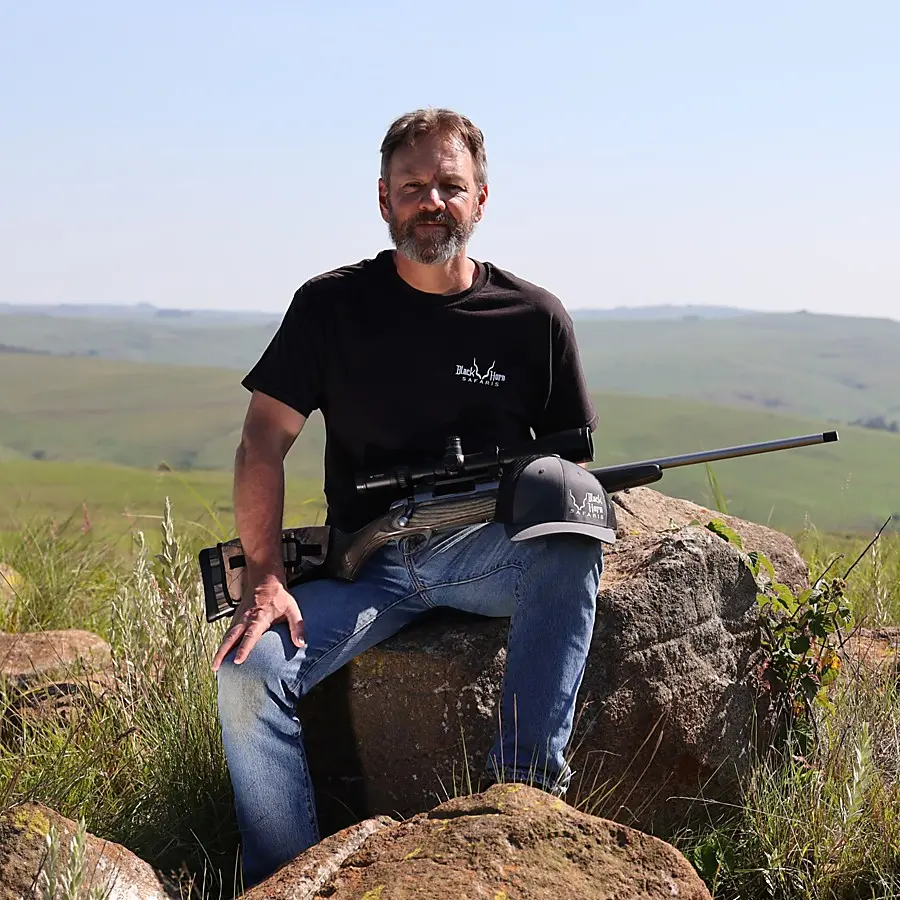
Adrian Anderson first obtained his Professional Hunters license in 1991. He is a Big Five and Dangerous Game licensed Professional Hunter and Hunting Outfitter. He has a tremendous love for wildlife and the African bush and enjoys sharing his knowledge with the hunting clients that he guides. Guiding hunters in Africa’s wild places is a passion and seeing them succeed with their goals brings satisfaction. With knowledge of the Safari industry built up over 32 years he is well qualified to give guidance to his hunting clients.
